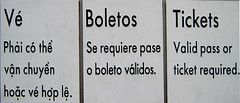
The motives of suicide bombers escape most of our understandings. This confusion presents a significant obstacle for policy makers trying to combat this type of crime. Robert J. Brym tackles this issue in his article “Six Lessons of Suicide Bombers” (Contexts, Fall 2007). Use the discussion questions or the activity below to help students engage with this topic.
(This article, along with these activities will also be featured in the upcoming Contexts Reader.)
1) Did it surprise you that suicide bombers tend not to be psychologically unstable or that they are not mainly motivated by religion? How do the facts and findings reported in this article conflict with our usual cultural understanding of terrorists and suicide bombers?
2) Why don’t terrorist organizations recruit “crazy” people for suicide attacks, according to this article?
3) Many countries refuse to negotiate with terrorists, stating that negotiation validates terrorism as a form of international relations. Based upon this article, do you think policies like this reduce the “boomerang effect” or make matters worse? Explain your answer.
ACTIVITY: Pretend you are the head of an anti-terrorism advisory board for the United Nations. Using Brym’s six lessons, devise a strategic action plan for combating and reducing instances of suicide bombing.








